Writing Fiction: How To Keep Track of Time in Your Story
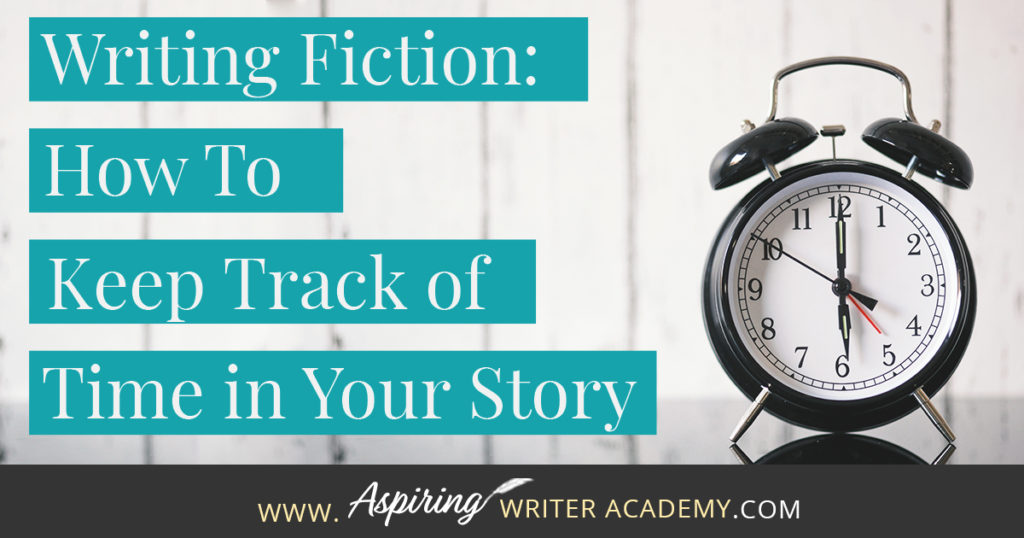
Have you ever read a story where the timeline didn’t make sense?
When writing a fictional story, using a ‘story calendar’ will help you keep track of time between each of your scenes to avoid confusion and keep your story believable and accurate.
You can either hand-sketch a calendar, download a free online calendar, or buy a day planner like you would use to keep track of your own life. Except, you would be using it to track the characters and events in your story.
In the article below, we will discuss the benefits of using a story calendar, where to get one, and how to use it to keep track of your story as you write.
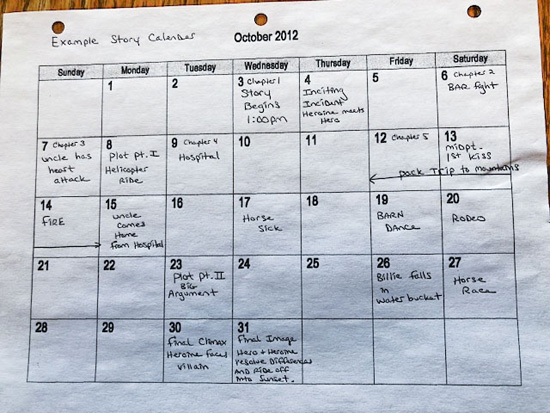
1) Why Should I Use A Story Calendar?
- Believability.
It is imperative for you, the writer, to keep track of the passage of time within your own story so your scenes will appear realistic. A character cannot be in one place and then appear somewhere else an hour later that is 500 miles away unless you state that they are capable of time-travel, teleportation, or own a supersonic jet that can transport them to other locations that quick.
Likewise, it would not be realistic to have a character bake bread from scratch, drive across town to pick up their kids from school, stop at the store for groceries, and chat with a friend all under an hour. You need to stop and think about how long each of these tasks would actually take for your character to accomplish.
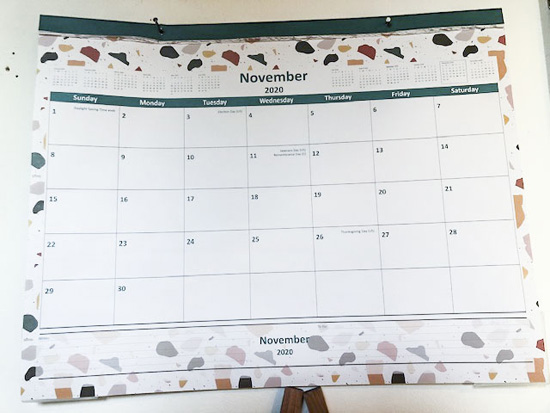
- Writing accurate passage of time helps ‘ground’ the reader.
A story calendar (some might call it a ‘story tracker’) can help you write scenes that convey how much time has passed since you last mentioned a character or event to help the reader better understand what is going on. It puts everything into the proper context.
For example, if you write a scene with a character in one location and then start another scene with that same character in a different location, the reader needs to know how much time has passed in-between scenes. Is it an hour later? The next day? Three days later? If you do not mark the passage of time for your reader at the beginning of each new scene, they may assume the two scenes happened almost back to back when that might not necessarily be true. This can lead the reader to become confused and distanced from your story, or worse, cause them to put your book down.
Similarly, if you write one scene with a character and then a second scene with a different character, then a third scene with the first character again, the reader needs to know how much time has passed since we last saw that character. What was that character doing in-between scenes? Is it believable the character could have accomplished those tasks in the time given between scenes?
- Another Reason to Use a Story Calendar Is To help you avoid errors.
A smart reader will catch mistakes in basic logic and common sense. They will not think very highly of an author who has one scene happen on a Tuesday, and then read that two days later it is Saturday when it should be Thursday.
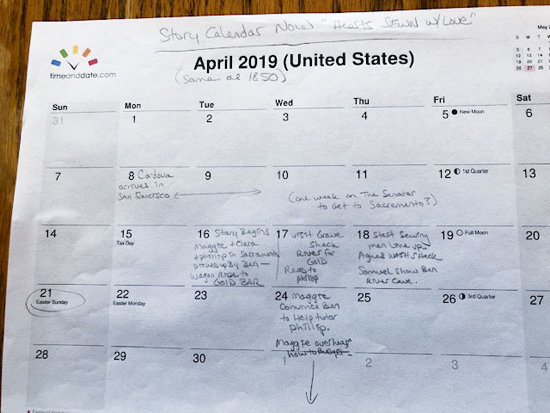
2. Where Can I Find A Story Calendar?
- The cheapest option is to draw your own on a piece of paper. Copy accurate dates from a real calendar.
- A better option, if you have a computer, would be to download and/or print the calendar months you need. There are several links to free calendars online. You can Google ‘free calendars’ to find the layout that best suits your needs. Some sites allow you to print a blank calendar which allows you to fill in the dates yourself and some are customizable so that you may add your own notes. Another advantage to this is that if you write historical, you can easily print off the accurate calendar months from a hundred years ago! Here are some of the many free calendar sites you may use:
https://www.calendarlabs.com/pdf-calendar/
- A third option is to buy one. Staples and other stores that sell office supplies have blank calendars that you can use to track your story. Simply write in the dates of the month yourself. The advantage of this option is that you can find larger calendars that allow you more space to write in what happens each day of your story. You may also opt to buy a day planner which has the hours, days, months, and year ready for you to fill out. However, if your story starts and finishes within just 1-2 months, the rest of the planner would go to waste, especially if the planner is dated. That is why I use either blank calendar sheets or only download and print the months I need for my story using the online version.
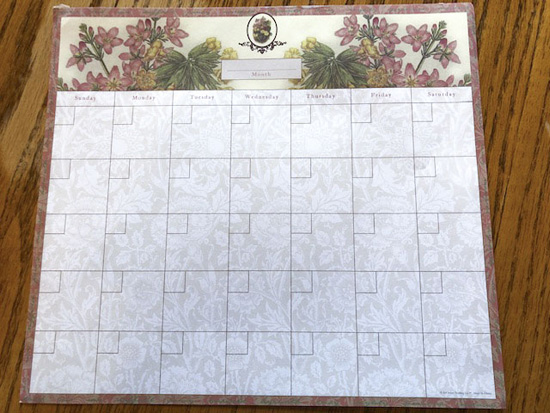
3. How Do I Use A Story Calendar While Writing?
Before I sit down to write any story, I make sure I have a story calendar to track the passage of time starting with page one. You can either keep your calendar on your computer and type in what happens each day of your story or print a calendar off and write by hand – using pencil so that you can easily erase! You may also want to color-code different events to keep track of different characters or story threads. Make sure you also mark any holidays or historical events that would impact the characters or plot in this story.
So what hour, day, month, year will your story begin?
If you do not know, then just pick a date and write it on your story calendar and go from there. If you find you need to change it later, you can adjust by erasing. Just make sure if you erase one date, you consider how it may affect the rest of the timeline in your story. Part of the revision process after the story is written will be to make sure the times/dates of your story accurately line up. Keeping a story calendar accurate right from the beginning will make this task easier.
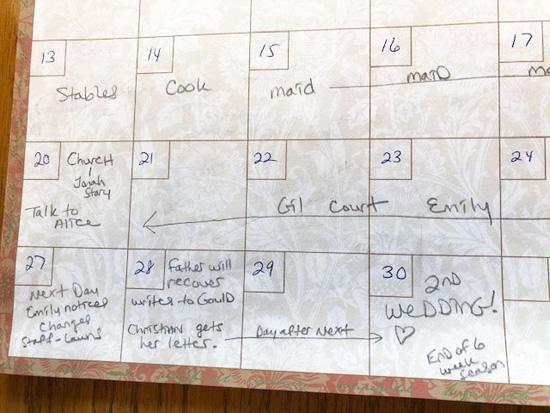
Keep your story calendar beside your computer as you write (or in an open tab) and use abbreviated notes to jot down what happens when. On the first day of your story, you may identify an action or scene by writing “Jenna meets Bob” or “Alice files for divorce” or “Aliens attack.” You may want to add the location these events take place or the approximate hour/time of day. Is it morning, afternoon, or evening? Does the exact hour matter? (It would in a mystery.)
Each day on the calendar, keep track of what takes place. If your story skips over a few days or weeks, you can draw an arrow across those days like you would to mark your family going on vacation.
Another advantage of using a story calendar is that it allows you to “see” your story at a quick glance. After the scenes are noted on the days they occur, you can follow the passage of time from day to day and week to week. While writing your story, you will want to ground your reader by informing them, “two days later, Sally met Bob at the post office” at the top of a new scene so the reader knows how much time went by since the last time they read about Sally and Bob. Or you might start a new scene by writing, “Three weeks later—” or “Sally hadn’t heard from Bob for three weeks, but when she did—” then go into the scene.
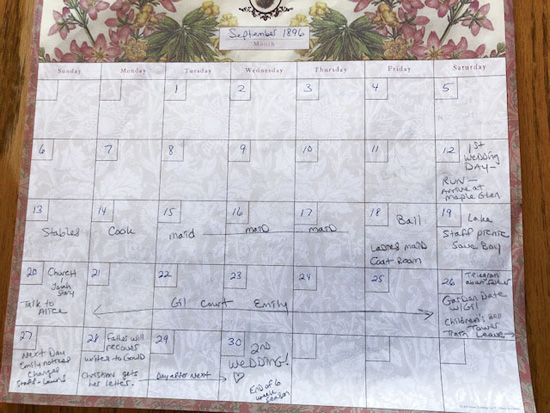
The point is to have your whole story mapped out on your story calendar. You can either do this while brainstorming or wait until you write the story. But even if you chart the events on your calendar beforehand, continue to refer to it while writing and update any changes in the timeline as you go. Most likely, you will need to make some changes. A quick glance at your story calendar can tell you if you need to change the wording in a scene to say an event happened two days later or three. Or you may need to have the character refer to something that happened a few weeks ago. When exactly was that?
A story calendar is a valuable tool that can help you keep the timeline and all the story details on track. It can save you a lot of time and trouble during the revision phase. And it can keep your story believable, accurate, and flowing smoothly for your reader so that they stay interested in your story from beginning to end.
If you have any other ideas on how to use a story calendar, we’d love to hear from you! You can connect with us by leaving questions or feedback in the comment box below.

ENTER YOUR EMAIL BELOW
TO GET YOUR FREE
"Brainstorming Your Story Idea Worksheet"
7 easy fill-in-the-blank pages,
+ 2 bonus pages filled with additional story examples.
A valuable tool to develop story plots again and again.
Our Goal for Aspiring Writer Academy is to help people learn how to write quality fiction, teach them to publish and promote their work, and to give them the necessary tools to pursue a writing career.
Other Blog Posts You May Like
Basic Story Structure: How to Plot in 6 Steps
Behind the Scenes: Interview with the Authors of the “Sew in Love” Collection
Our Inspiration For Writing A Historical Novella Collection
Brainstorming Story Ideas: Where to Find Them
Why We Started Aspiring Writer Academy: Our Story
Scene & Sequel: The Secret to Plotting an Epic Novel
Scene & Sequel: The Secret to Plotting an Epic Novel (Part 2)
Writing Fiction: How to Develop Your Story Premise
12 Quick Tips to Write Dazzling Dialogue
10 Questions to Ask When Creating Characters for Your Story
Macro Edits: Looking at Your Story as a Whole
Do you find it difficult to create compelling antagonists and villains for your stories? Do your villains feel cartoonish and unbelievable? Do they lack motivation or a specific game plan? Discover the secrets to crafting villains that will stick with your readers long after they finish your story, with our How to Create Antagonists & Villains Workbook.
This 32-page instructional workbook is packed with valuable fill-in-the-blank templates and practical advice to help you create memorable and effective antagonists and villains. Whether you're a seasoned writer or just starting out, this workbook will take your writing to the next level.

is a multi-published author, speaker, and writing coach. She writes sweet contemporary, inspirational, and historical romance and loves teaching aspiring writers how to write quality fiction. Read her inspiring story of how she published her first book and launched a successful writing career.


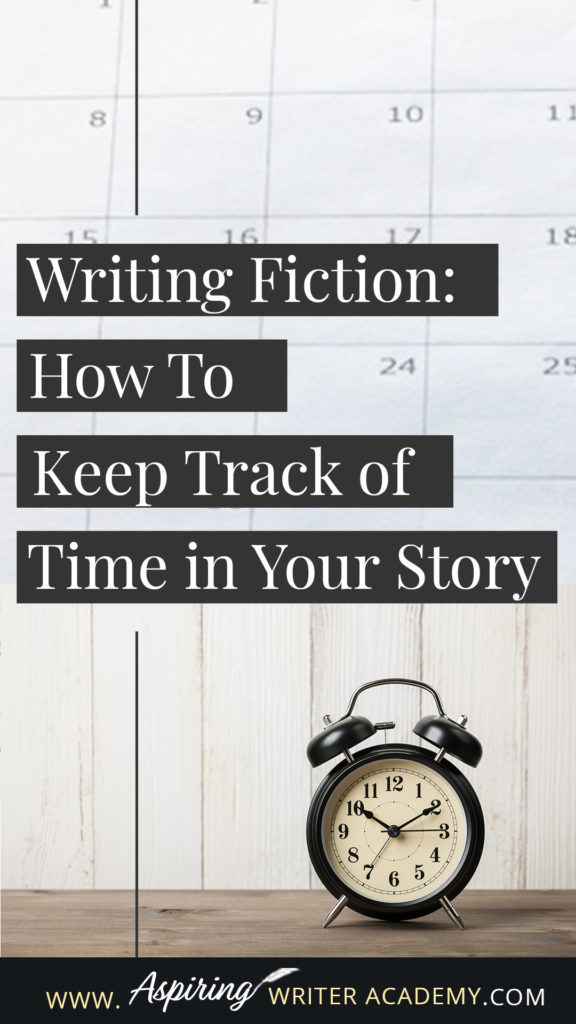




















[…] set in the distant past or future can be mapped out using calendars generated online, according to the Aspiring Writing Academy (https://aspiringwriteracademy.com). Alternatively, use an undated planner, especially if the story […]
[…] set in the distant past or future can be mapped out using calendars generated online, according to the Aspiring Writing Academy (https://aspiringwriteracademy.com). Alternatively, use an undated planner, especially if the story […]